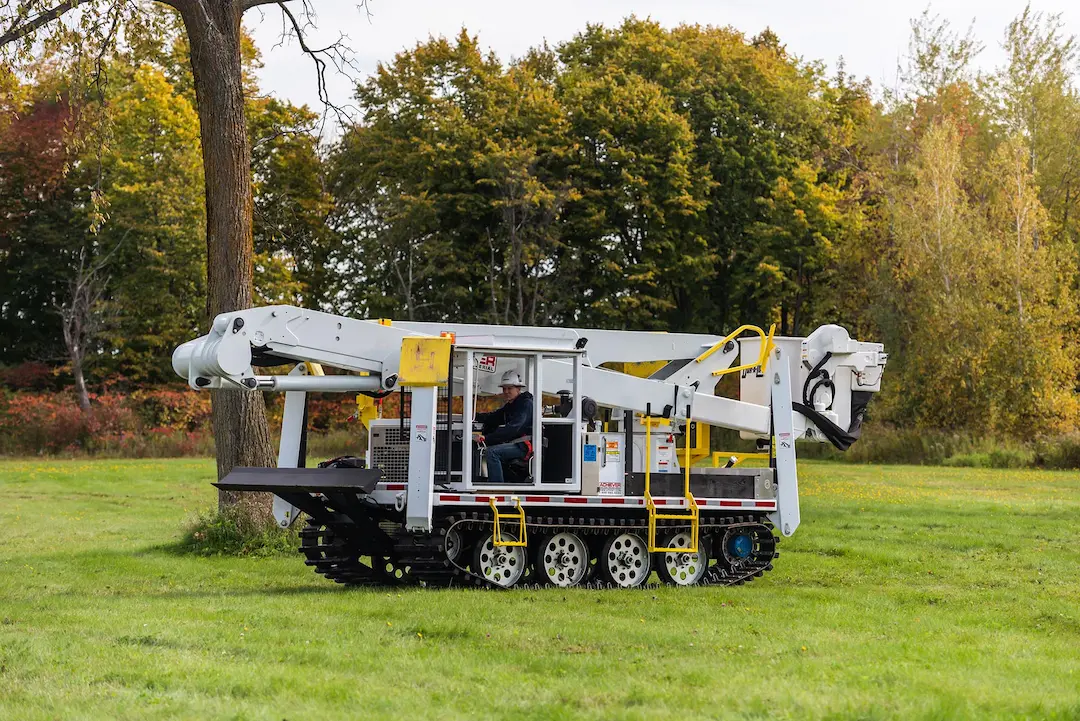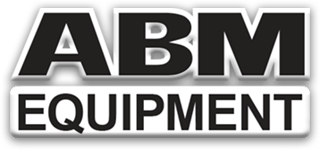Protect Your Aerial Equipment Investment and Your Team with ABM Equipment’s Complete Bucket Truck Maintenance Guide

As winter thaws and your aerial equipment prepares for the busy season ahead, now is the critical time to ensure every component is functioning at peak performance.
Beyond standard maintenance, proper electrical safety verification can mean the difference between routine operation and catastrophic incidents.
At ABM Equipment, we’ve compiled this comprehensive guide to walk you through the essential maintenance tasks for your Versalift, Manitex, Vantel, or UTV International equipment—with special attention to the critical but often overlooked dielectric testing process that protects your operators from electrical hazards.
Step-by-Step Spring Maintenance Tasks
These are the essential tasks to perform, with clear actions to follow:
✅ 1. Perform a Full Visual & Functional Inspection
Step 1: Walk around each unit and check the boom, chassis, and outriggers for visible damage, cracks, or rust. Step 2: Extend and retract the boom fully—listen for grinding or hesitation. Step 3: Operate the controls from all positions (upper, lower, remote).
✅ 2. Lubricate All Grease Points
Step 1: Identify all lubrication points on the boom, pivot pins, slewing ring, and sheaves. Step 2: Clean the fitting and apply manufacturer-recommended grease. Step 3: Cycle the boom and outriggers after greasing to distribute evenly.
✅ 3. Inspect and Replace Hydraulic Hoses
Step 1: Check hoses for signs of aging: cracks, bulges, or leaks. Step 2: Tighten or replace fittings as needed. Step 3: Replace hoses showing wear, especially those in articulation zones.
✅ 4. Check and Replace Hydraulic Filters
Step 1: Inspect the hydraulic reservoir for fluid condition (check color and clarity). Step 2: Replace hydraulic filters if fluid is dirty or sluggish. Step 3: Flush and refill the system if needed, especially after storage.
✅ 5. Test Rotation Bearing and Torque Bolts
Step 1: Rotate the boom and listen for grinding or skipping. Step 2: Torque slew ring bolts to manufacturer specs. Step 3: Re-grease the bearing and check for even rotation.
✅ 6. Verify Safety Systems and Limit Switches
Step 1: Test the Load Moment Indicator (LMI), anti-two block, and upper boom angle sensors. Step 2: Confirm all E-stops and emergency lowering systems function correctly. Step 3: Replace any faulty sensors or control switches.
✅ 7. Inspect Outriggers and Pads
Step 1: Check for fluid leaks at outrigger cylinders. Step 2: Inspect pads for dry rot or cracking. Step 3: Replace worn pads and reseal or rebuild leaking cylinders.
✅ 8. Test Battery and Charging System
Step 1: Clean battery terminals and check voltage with a multimeter. Step 2: Test under load if voltage is low. Step 3: Replace any battery not holding charge, and check alternator function.
✅ 9. Clean and Protect Electrical Connections
Step 1: Open control panels and check all connectors for corrosion or wear. Step 2: Apply dielectric grease to protect against spring moisture. Step 3: Replace damaged or brittle wiring.
✅ 10. Replace Worn Safety Labels
Step 1: Walk around the unit and verify all ANSI/OSHA decals are present and legible. Step 2: Order replacements for any missing or faded labels. Step 3: Ensure operator manuals are present and updated.
✅ 11. Schedule Professional Dielectric Testing
Step 1: Consult your maintenance records to verify when the last dielectric test was performed. Step 2: Schedule testing with qualified technicians if due (typically annually). Step 3: Address any insulation issues identified during testing immediately.
The Critical Importance of Dielectric Testing
For insulated aerial equipment, especially bucket trucks and boom lifts used in electrical work, dielectric testing is not just a maintenance item—it’s a life-saving necessity. Here’s why professional dielectric testing should be part of your spring maintenance routine:
What Is Dielectric Testing?
Dielectric testing evaluates the electrical insulation integrity of your equipment. It verifies that insulated components can withstand the specific voltage levels they’re rated for, ensuring they provide proper protection against electrical current.
Why Is Professional Testing Essential?
- OSHA Compliance: ANSI A92.2 and OSHA standards require regular dielectric testing of insulated aerial devices.
- Worker Safety: Equipment that passes visual inspection may still have invisible flaws that compromise insulation.
- Liability Protection: Documented testing provides evidence of due diligence in maintaining safe equipment.
- Insurance Requirements: Many insurance policies require proof of current dielectric testing.
The ABM Equipment Advantage
Our certified technicians at ABM Equipment are specially trained to perform comprehensive dielectric testing using calibrated equipment that meets all industry standards. Our testing process includes:
- Comprehensive Boom Inspection: Before electrical testing, our technicians thoroughly inspect all insulating components for physical damage, contamination, or moisture.
- Professional Testing Equipment: We use industry-standard testing apparatus calibrated to precise specifications for accurate results.
- Multiple Test Points: We test at various critical points to ensure complete insulation integrity throughout the system.
- Detailed Documentation: You’ll receive comprehensive test reports documenting compliance with ANSI/OSHA standards.
- Immediate Remediation Options: If issues are found, our technicians can recommend and perform necessary repairs on-site when possible.
When to Schedule Testing
- At minimum annually (as required by ANSI A92.2)
- After any incident that could compromise insulation
- Following any major repair to insulated components
- When equipment has been exposed to extreme conditions
- Before peak work season begins (spring is ideal)
Don’t risk operator safety or non-compliance penalties. Contact ABM Equipment today to schedule professional dielectric testing as part of your spring maintenance program.
